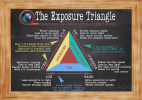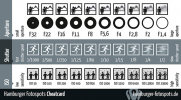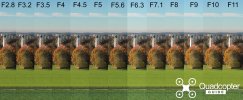I am looking for some good old Camera Cheat Sheets for the Mavic 2 PRO.
What would be great, is to find Cheat Sheet for different types of photography. Maybe by time of day or type of shot, I really dont know what the best way to index the cheat sheets. I do know that for us NewBee's or less frequent hobbyist.
I just don't fly enough to remember all the things I did or should do in different situations. Like I am trying to take some Long Exposure photos on sunny days and at night, some have snow some don't. A real good example might be: Taking a long exposure shot at night in the city= what filter should be used, what iso, what shutter speed, front led off, and what ever else you can think of??????? Then a Cheat sheet for that exact same situation but on a sunny day???? Or cloudy day, photo of trees changing colors???
I know there can be 100's if not 1000's of situations, BUT maybe there are cheat sheets that can be changed? And these cheat sheets need to be Mavic 2 Pro.
IF ANYONE HAS IDEAS WHERE I CAN GET SUCH CHEAT SHEETS OR IF ANYONE CAN CREAT THESE I WOUD BE MORE THAN WILLING TO COMPENSATE
What would be great, is to find Cheat Sheet for different types of photography. Maybe by time of day or type of shot, I really dont know what the best way to index the cheat sheets. I do know that for us NewBee's or less frequent hobbyist.
I just don't fly enough to remember all the things I did or should do in different situations. Like I am trying to take some Long Exposure photos on sunny days and at night, some have snow some don't. A real good example might be: Taking a long exposure shot at night in the city= what filter should be used, what iso, what shutter speed, front led off, and what ever else you can think of??????? Then a Cheat sheet for that exact same situation but on a sunny day???? Or cloudy day, photo of trees changing colors???
I know there can be 100's if not 1000's of situations, BUT maybe there are cheat sheets that can be changed? And these cheat sheets need to be Mavic 2 Pro.
IF ANYONE HAS IDEAS WHERE I CAN GET SUCH CHEAT SHEETS OR IF ANYONE CAN CREAT THESE I WOUD BE MORE THAN WILLING TO COMPENSATE













